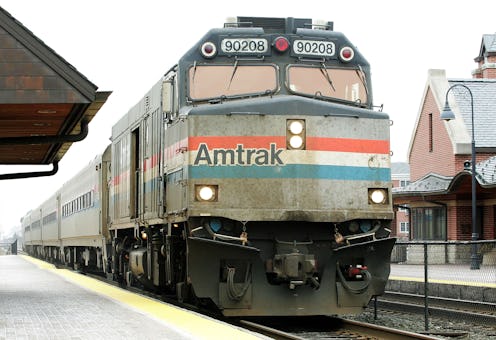News
Is Amtrak Safe?
On Tuesday night, a New York-bound Amtrak train derailed in Philadelphia, killing eight people and injuring about 150. As rescue workers continue to search through the wreckage on Wednesday morning, the crash is already shaping to be one of the worst in Amtrak's history, but it's certainly not the first. This is Amtrak's ninth derailment this year alone, according to the Federal Railroad Administration. In the wake of the crash, one question is undoubtedly on many people's minds: Is Amtrak safe to ride? Though derailments are more frequent than most people might think, the short answer is still: yes, absolutely.
At about 9:30 p.m. on Tuesday, Amtrak Northeast Regional Train 188, which was on its way to New York from Washington, suddenly derailed in Philadelphia's Port Richmond neighborhood, forcing all seven cars to come off the tracks. Of the 238 passengers and five crew members, six have been confirmed dead so far and roughly 150 are being treated in various hospitals, many of them in critical condition. (Update: Seven passengers have now been confirmed dead.)Philadelphia Mayor Michael Nutter told reporters near the crash site:
It is an absolute, disastrous mess. I've never seen anything like this in my life.
Tuesday's crash was indisputably deadly and destructive, and the death toll could continue to rise, but it shouldn't deter people from ever riding Amtrak again. As officials continue to investigate what exactly caused the derailment, there are some important facts to know that should put your mind at ease. Because, yes, Amtrak is still safe to ride.
First of all, most derailments are minor. George Bibel, a University of North Dakota mechanical engineering professor, described derailments in the 2012 book Train Wreck: The Forensics of Rail Disasters:
Most derailments are relatively benign, and can be compared to a person walking down the street, tripping, getting back up, and continuing on her or his way.
If you think of them in the same context as car accidents, many of which are harmless fender benders, then you can begin to imagine how rare a crash of this magnitude occurs. In fact, when looking at the fatalities caused by train travel vs. car travel, the statistics further emphasize how safe the former is compared to the latter.
In 2013 (the last year with full statistics for both), there were 707 deaths caused by a train accident, while there were 32,719 deaths caused by a motor vehicle accident. A 2013 Daily Beast report averaged the number of train deaths over five years and determined that the odds of dying in a train accident are one in 431,800. According to the National Safety Council, the odds of dying in a motor vehicle crash are one in 112. That's a pretty significant difference.
Overall, despite our nation's continuously deteriorating infrastructure, the number of train accidents seems to be on the decline.
Images: Getty Images (2), Federal Railroad Administration Office of Safety Analysis
